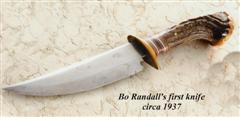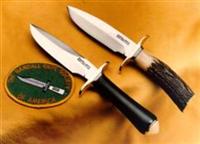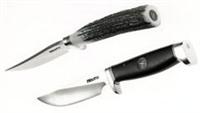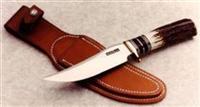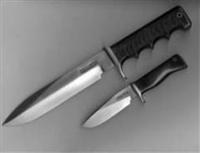Using photos is not the best way to formulate any strong opinion, but some times that is all we have. My detractors for the most part have primarily used photos to form their opinion, theories, etc. That puts them at a disadvantage no doubt, an in my opinion, to use the words of one of the detractors, marginalizes their position. That is through no fault of mine, they just have not handled many sheaths.
I am purposely omitting at this time the backs of the sheaths but will add them after some folks get a chance to study the fronts. I think it is clouding the issue for some folks that only see a stamp orientation or a number font style to make an "easy" determination as a substitute for experience.
So here we go.
The list below are the basic things required to "build" a sheath. In other words like the chassis/body of a car. It is pretty much the same from car to car down the assembly line. There is a certain degree of uniformity expected. The chassis/body and some other items are not just changed because a guy on the factory floor decided to change it.
Other items can change with say, model year or options. In most manufacturing undertakings, these things go through a process of review and trial prior to change. They don't change on the factory floor.
Now you will have a different chassis/body with different manufacturers like Ford and Chevy, but they perform the same function. I see the same with the sheath makers dating all the way back to Clarence Moore.
That being said, the same principals can be used for the sheaths of discussion. Some items are the chassis, while other items like stamp orientation, keeper snap location, and model and/or length font are not the critical assembly line items. Those items while often somewhat consistent with manufacturers, they can be changed easily.
Below is a list of the "chassis" of the sheath.
things to look for:
1) Overall shape of the sheath(die cut covers 1,2,3,6)
2) Toe shape
3) throat shape
4) leather finish(harder by photo only)
5] stitching
6) belt loop width and contour
You have seen this photo numerous times and it still seems to escape a few that view it when trying to determine the origin of a sheath. If you don't even have an idea what you are looking at, then it is not as easy. You cannot "learn" it with photos alone as some attempt to do. Like with anything else, time invested says volumes. It will be presented in two arrangements, which should make it relatively easy for viewers to discern differences with side by side comparisons. It shows the "three" makers - Heiser, HKL, and Johnson.
Note that Heiser & HKL are virtually the same sheath. The third brown button sheath is from the same maker as the baby dot sheath which we know is a Johnson. The overall shape of the sheath to include the toe, throat, and belt loop width is the same. Stamps, whether logo, orientation, or whatever don't mean that much.
Attachments
------
 Description: Heiser - HKL - Johnson - Johnson
Description: Heiser - HKL - Johnson - Johnson------
 Description: HKL - Johnson - Heiser - Johnson
Description: HKL - Johnson - Heiser - Johnson


